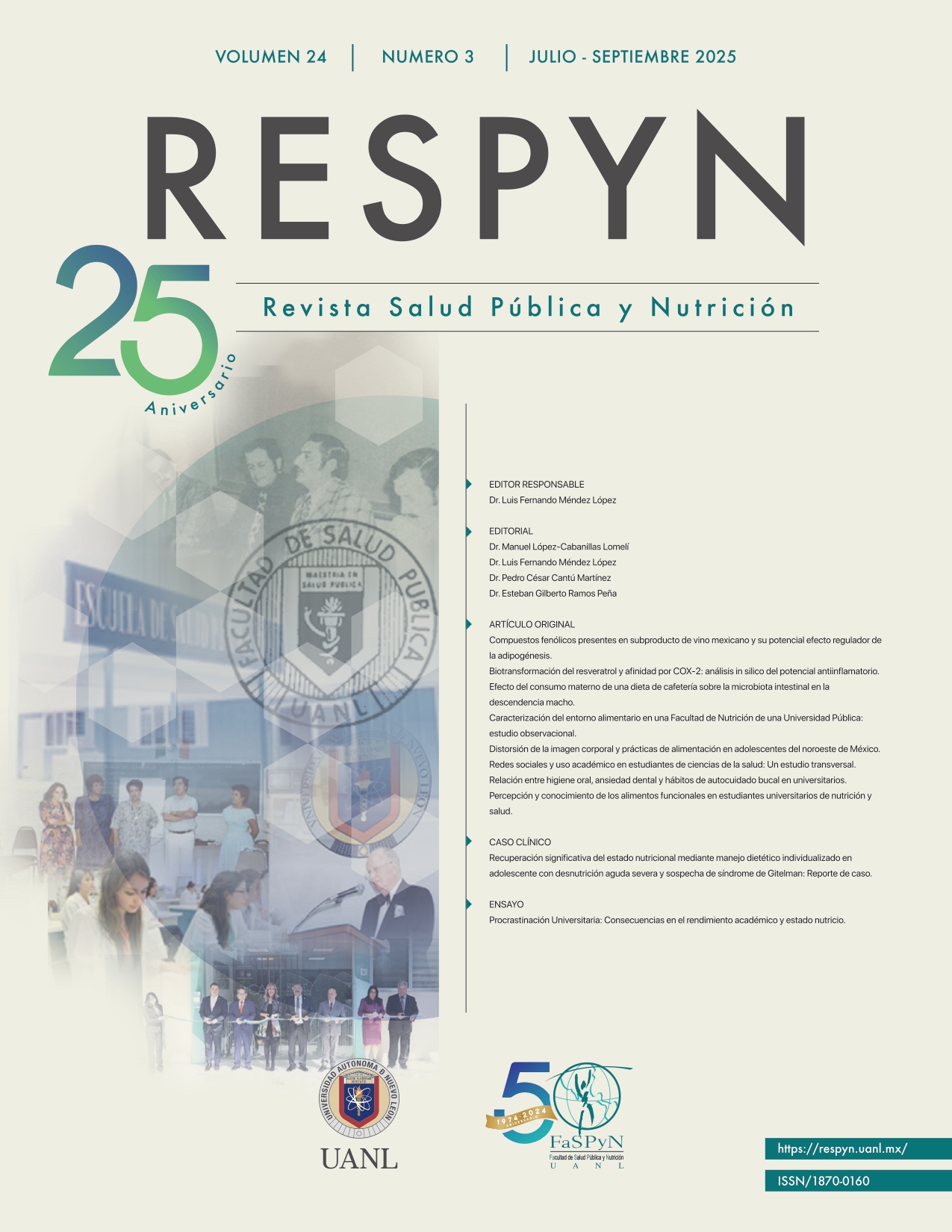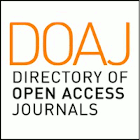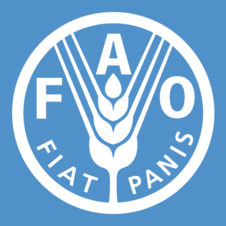Compuestos fenólicos presentes en subproducto de vino mexicano y su potencial efecto regulador de la adipogénesis
DOI:
https://doi.org/10.29105/respyn24.3-883Palabras clave:
alimentos antioxidantes, alimentos, antioxidantesResumen
Introducción: El orujo generado durante la vinificación mexicana constituye una fuente subutilizada de compuestos antioxidantes con potencial para regular la formación de tejido graso. Objetivo: Evaluar el contenido fenólico y la actividad antioxidante de orujos Tempranillo y Cabernet Sauvignon provenientes de Chihuahua y estimar, mediante estudio bioinformático, su interacción con el receptor activado por proliferadores de peroxisomas gamma, clave en la adipogénesis. Material y Método: Se desecó, molió y extrajo cada orujo para cuantificar polifenoles y flavonoides totales y se midió la capacidad antioxidante. Los componentes se identificaron por cromatografía líquida acoplada a espectrometría de masas. Se modeló el acoplamiento molecular con el receptor y se calcularon parámetros de absorción, distribución, metabolismo y excreción. Resultados: Tempranillo presentó más flavonoides y hasta el triple de capacidad antioxidante que Cabernet. Se detectaron quercetina, viniferina y naringenina; sus energías de unión (-10,0 a -7,0 kcal mol⁻¹) superaron o igualaron las de fármacos de referencia, compartiendo residuos críticos de unión. El análisis de biodisponibilidad indicó permeabilidad intestinal. Conclusión: El orujo Tempranillo es un ingrediente sostenible rico en compuestos bioactivos capaces de interactuar favorablemente con el receptor regulador de la adipogénesis, lo que respalda su uso potencial en estrategias alimentarias contra la obesidad.
Descargas
Citas
Ahmadian, M., Suh, J. M., Hah, N., Liddle, C., Atkins, A. R., Downes, M., & Evans, R. M. (2013). PPARγ signaling and metabolism: The good, the bad and the future. Nature Medicine, 19(5), Article 5. https://doi.org/10.1038/nm.3159 DOI: https://doi.org/10.1038/nm.3159
Aranaz, P., Navarro-Herrera, D., Zabala, M., Miguéliz, I., Romo-Hualde, A., López-Yoldi, M., Martínez, J. A., Vizmanos, J. L., Milagro, F. I., & González-Navarro, C. J. (2019). Phenolic Compounds Inhibit 3T3-L1 Adipogenesis Depending on the Stage of Differentiation and Their Binding Affinity to PPARγ. Molecules, 24(6). https://doi.org/10.3390/molecules24061045 DOI: https://doi.org/10.3390/molecules24061045
Barquera, S., Hernández-Barrera, L., Oviedo-Solís, C., Rodríguez-Ramírez, S., Monterrubio-Flores, E., Trejo-Valdivia, B., Martínez-Tapia, B., Aguilar-Salinas, C., Galván-Valencia, O., Chávez-Manzanera, E., Rivera-Dommarco, J., & Campos-Nonato, I. (2024). Obesidad en adultos. Salud Pública de México, 66(4, jul-ago), Article 4, jul-ago. https://doi.org/10.21149/15863 DOI: https://doi.org/10.21149/15863
Beltrán-Noboa, A., Proaño-Ojeda, J., Guevara, M., Gallo, B., Berrueta, L. A., Giampieri, F., Perez-Castillo, Y., Battino, M., Álvarez-Suarez, J. M., & Tejera, E. (2022). Metabolomic profile and computational analysis for the identification of the potential anti-inflammatory mechanisms of action of the traditional medicinal plants Ocimum basilicum and Ocimum tenuiflorum. Food and Chemical Toxicology, 164, 113039. https://doi.org/10.1016/j.fct.2022.113039 DOI: https://doi.org/10.1016/j.fct.2022.113039
Benzie, I. F. F., & Strain, J. J. (1996). The Ferric Reducing Ability of Plasma (FRAP) as a Measure of “Antioxidant Power”: The FRAP Assay. Analytical Biochemistry, 239(1), 70–76. https://doi.org/10.1006/abio.1996.0292 DOI: https://doi.org/10.1006/abio.1996.0292
Bondet, V., Brand-Williams, W., & Berset, C. (1997). Kinetics and Mechanisms of Antioxidant Activity using the DPPH.Free Radical Method. LWT - Food Science and Technology, 30(6), 609–615. https://doi.org/10.1006/fstl.1997.0240 DOI: https://doi.org/10.1006/fstl.1997.0240
Carullo, G., Ahmed, A., Fusi, F., Sciubba, F., Di Cocco, M. E., Restuccia, D., Spizzirri, U. G., Saponara, S., & Aiello, F. (2020). Vasorelaxant Effects Induced by Red Wine and Pomace Extracts of Magliocco Dolce cv. Pharmaceuticals (Basel, Switzerland), 13(5), 87. https://doi.org/10.3390/ph13050087 DOI: https://doi.org/10.3390/ph13050087
Carvalho, M. V. de, Gonçalves-de-Albuquerque, C. F., & Silva, A. R. (2021). PPAR Gamma: From Definition to Molecular Targets and Therapy of Lung Diseases. International Journal of Molecular Sciences, 22(2), Article 2. https://doi.org/10.3390/ijms22020805 DOI: https://doi.org/10.3390/ijms22020805
Castro-Palafox, J., Macías-Gallardo, F., & Ozuna, C. (2024). The culture of wine in Mexican gastronomy: Historical background, current context, and perspectives for the future. International Journal of Gastronomy and Food Science, 35, 100848. https://doi.org/10.1016/j.ijgfs.2023.100848 DOI: https://doi.org/10.1016/j.ijgfs.2023.100848
Feng, X.-Y., Ding, T.-T., Liu, Y.-Y., Xu, W.-R., & Cheng, X.-C. (2020). In-silico identification of peroxisome proliferator-activated receptor (PPAR)α/γ agonists from Ligand Expo Components database. Journal of Biomolecular Structure and Dynamics, 0(0), 1–12. https://doi.org/10.1080/07391102.2020.1745279 DOI: https://doi.org/10.1080/07391102.2020.1745279
Ferri, M., Bin, S., Vallini, V., Fava, F., Michelini, E., Roda, A., Minnucci, G., Bucchi, G., & Tassoni, A. (2016). Recovery of polyphenols from red grape pomace and assessment of their antioxidant and anti-cholesterol activities. New Biotechnology, 33(3), 338–344. https://doi.org/10.1016/j.nbt.2015.12.004 DOI: https://doi.org/10.1016/j.nbt.2015.12.004
Flamini, R., De Rosso, M., & Bavaresco, L. (2015). Study of Grape Polyphenols by Liquid Chromatography-High-Resolution Mass Spectrometry (UHPLC/QTOF) and Suspect Screening Analysis. Journal of Analytical Methods in Chemistry, 2015, 350259. https://doi.org/10.1155/2015/350259 DOI: https://doi.org/10.1155/2015/350259
Fuentes-Verduzco, C., Lugo-García, G. A., Pérez-Leal, R., Camacho-Inzunza, F. A., Fuentes-Verduzco, C., Lugo-García, G. A., Pérez-Leal, R., & Camacho-Inzunza, F. A. (2022). Calidad de vinos de la variedad tempranillo, cultivada en tres viñedos en Chihuahua, México. Estudios sociales. Revista de alimentación contemporánea y desarrollo regional, 32(59). https://doi.org/10.24836/es.v32i59.1195 DOI: https://doi.org/10.24836/es.v32i59.1195
Hithamani, G., & Srinivasan, K. (2014). Bioaccessibility of Polyphenols from Wheat (Triticum aestivum), Sorghum (Sorghum bicolor), Green Gram (Vigna radiata), and Chickpea (Cicer arietinum) as Influenced by Domestic Food Processing. Journal of Agricultural and Food Chemistry, 62(46), 11170–11179. https://doi.org/10.1021/jf503450u DOI: https://doi.org/10.1021/jf503450u
Khakpour, A., Ghiabi, S., Babaheydari, A. K., Mirahmadi, S. A., Baziyar, P., Heidari-Soureshjani, E., & Horestani, M. K. (2025). Discovering the therapeutic potential of Naringenin in diabetes related to GLUT-4 and its regulatory factors: A computational approach. Chemical Physics Impact, 10, 100784. https://doi.org/10.1016/j.chphi.2024.100784 DOI: https://doi.org/10.1016/j.chphi.2024.100784
López-Hernández, A. A., Ortega-Villarreal, A. S., Vázquez Rodríguez, J. A., López-Cabanillas Lomelí, M., & González-Martínez, B. E. (2022). Application of different cooking methods to improve nutritional quality of broccoli (Brassica oleracea var. Italica) regarding its compounds content with antioxidant activity. International Journal of Gastronomy and Food Science, 28, 100510. https://doi.org/10.1016/j.ijgfs.2022.100510 DOI: https://doi.org/10.1016/j.ijgfs.2022.100510
Ma, X., Wang, D., Zhao, W., & Xu, L. (2018). Deciphering the Roles of PPARγ in Adipocytes via Dynamic Change of Transcription Complex. Frontiers in Endocrinology, 9. https://doi.org/10.3389/fendo.2018.00473 DOI: https://doi.org/10.3389/fendo.2018.00473
Méndez-López, L. F., Sosa de León, D., López-Cabanillas Lomelí, M., González-Martínez, B. E., & Vázquez-Rodríguez, J. A. (2022). Phytochemicals From Vicia faba Beans as Ligands of the Aryl Hydrocarbon Receptor to Regulate Autoimmune Diseases. Frontiers in Nutrition, 9. https://www.frontiersin.org/article/10.3389/fnut.2022.790440 DOI: https://doi.org/10.3389/fnut.2022.790440
Muñoz-Bernal, Ó. A., Coria-Oliveros, A. J., de la Rosa, L. A., Rodrigo-García, J., del Rocío Martínez-Ruiz, N., Sayago-Ayerdi, S. G., & Alvarez-Parrilla, E. (2021). Cardioprotective effect of red wine and grape pomace. Food Research International, 140, 110069. https://doi.org/10.1016/j.foodres.2020.110069 DOI: https://doi.org/10.1016/j.foodres.2020.110069
Muñoz-Bernal, Ó. A., Coria-Oliveros, A. J., Vazquez-Flores, A. A., De La Rosa, L. A., Núñez-Gastélum, J. A., Rodrigo-García, J., Ayala-Zavala, J. F., & Alvarez-Parrilla, E. (2020). Evolution of Phenolic Content, Antioxidant Capacity and Phenolic Profile during Cold Pre-fermentative Maceration and Subsequent Fermentation of Cabernet Sauvignon Red Wine. South African Journal of Enology and Viticulture, 41(1). https://doi.org/10.21548/41-1-3778 DOI: https://doi.org/10.21548/41-1-3778
Nenadis, N., Wang, L.-F., Tsimidou, M., & Zhang, H.-Y. (2004). Estimation of Scavenging Activity of Phenolic Compounds Using the ABTS•+ Assay. Journal of Agricultural and Food Chemistry, 52(15), 4669–4674. https://doi.org/10.1021/jf0400056 DOI: https://doi.org/10.1021/jf0400056
Nocedo-Mena, D., Ríos, M. Y., Ramírez-Cisneros, M. Á., González-Maya, L., Sánchez-Carranza, J. N., & Camacho-Corona, M. del R. (2021). Metabolomic Profile and Cytotoxic Activity of Cissus incisa Leaves Extracts. Plants, 10(7), Article 7.
https://doi.org/10.3390/plants10071389 DOI: https://doi.org/10.3390/plants10071389
Pizaña Cisneros, R. I. (2023). EVALUACIÓN DE LA DIGESTIBILIDAD PROTEICA DE RESIDUOS DE CAFÉ Y EL POTENCIAL DE SUS PÉPTIDOS BIOACTIVOS PARA EL MANEJO DEL SÍNDROME METABÓLICO [Universidad Autónoma de Nuevo León]. http://eprints.uanl.mx/25256/1/1080328771.pdf#page=58.12
Razavi, S.-M., Gholamin, S., Eskandari, A., Mohsenian, N., Ghorbanihaghjo, A., Delazar, A., Rashtchizadeh, N., Keshtkar-Jahromi, M., & Argani, H. (2013). Red Grape Seed Extract Improves Lipid Profiles and Decreases Oxidized Low-Density Lipoprotein in Patients with Mild Hyperlipidemia. Journal of Medicinal Food, 16(3), 255–258. https://doi.org/10.1089/jmf.2012.2408 DOI: https://doi.org/10.1089/jmf.2012.2408
Ribeiro, T. P., Oliveira, A. C., Mendes-Junior, L. G., França, K. C., Nakao, L. S., Schini-Kerth, V. B., & Medeiros, I. A. (2016). Cardiovascular effects induced by northeastern Brazilian red wine: Role of nitric oxide and redox sensitive pathways. Journal of Functional Foods, 22, 82–92. https://doi.org/10.1016/j.jff.2015.12.032 DOI: https://doi.org/10.1016/j.jff.2015.12.032
Rodrigues, R. P., Gando-Ferreira, L. M., & Quina, M. J. (2022). Increasing Value of Winery Residues through Integrated Biorefinery Processes: A Review. Molecules, 27(15), Article 15. https://doi.org/10.3390/molecules27154709 DOI: https://doi.org/10.3390/molecules27154709
Rodriguez-Rodriguez, R., Justo, M. L., Claro, C. M., Vila, E., Parrado, J., Herrera, M. D., & Alvarez de Sotomayor, M. (2012). Endothelium-dependent vasodilator and antioxidant properties of a novel enzymatic extract of grape pomace from wine industrial waste. Food Chemistry, 135(3), 1044–1051. https://doi.org/10.1016/j.foodchem.2012.05.089 DOI: https://doi.org/10.1016/j.foodchem.2012.05.089
Shamah-Levy, T., Gaona-Pineda, E. B., Cuevas-Nasu, L., Valenzuela-Bravo, D. G., Morales-Ruan, C., Rodríguez-Ramírez, S., Méndez-Gómez-Humarán, I., Ávila-Arcos, M. A., Álvarez-Sánchez, C., Ávila-Curiel, A., Díaz-trejo, L. I., Espinosa-Galindo, A. F., Fajardo-Niquete, I., Perea-Martínez, A., Véjar-Rentería, L. S., & Villalpando-Carrión, S. (2024). Sobrepeso y obesidad en población escolar y adolescente. Salud Pública de México, 66(4, jul-ago), Article 4, jul-ago. https://doi.org/10.21149/15842 DOI: https://doi.org/10.21149/15842
Sosa De León, D., Méndez-López, L. F., González-Martínez, B. E., López-Cabanillas Lomelí, M., López-Hernández, A. A., Luna-Vital, D. A., Néder-Suárez, D., & Vázquez-Rodríguez, J. A. (2024). Bioaccessibility and potential bioactivity of fresh and mature fava bean flavonoids. Applied Food Research, 4(2), 100523.https://doi.org/10.1016/j.afres.2024.100523 DOI: https://doi.org/10.1016/j.afres.2024.100523
Taifouris, M., El-Halwagi, M., & Martin, M. (2023). Evaluation of the Economic, Environmental, and Social Impact of the Valorization of Grape Pomace from the Wine Industry. ACS Sustainable Chemistry & Engineering, 11(37), 13718–13728.
https://doi.org/10.1021/acssuschemeng.3c03615 DOI: https://doi.org/10.1021/acssuschemeng.3c03615
Urquiaga, I., D’Acuña, S., Pérez, D., Dicenta, S., Echeverría, G., Rigotti, A., & Leighton, F. (2015). Wine grape pomace flour improves blood pressure, fasting glucose and protein damage in humans: A randomized controlled trial. Biological Research, 48(1), 49. https://doi.org/10.1186/s40659-015-0040-9 DOI: https://doi.org/10.1186/s40659-015-0040-9
Descargas
Publicado
Cómo citar
Número
Sección
Licencia
Derechos de autor 2025 Edith Garicey Flores Luna , Blanca Edelia González Martínez, Manuel López-Cabanillas Lomelí , David Neder Suarez , Jesús Alberto Vázquez Rodríguez

Esta obra está bajo una licencia internacional Creative Commons Atribución 4.0.
Los derechos del trabajo pertenecen al autor o autores, sin embargo, al enviarlo a publicación en la Revista Salud Pública y Nutrición de la Facultad de Salud Pública y Nutrición de la Universidad Autónoma de Nuevo León, le otorgan el derecho para su primera publicación en medio electrónico, y posiblemente, en medio impreso a la Revista Salud Pública y Nutrición. La licencia que se utiliza es la de atribución de Creative Commons , que permite a terceros utilizar lo publicado siempre que se mencione la autoría del trabajo y a la primera publicación que es en la Revista Salud Pública y Nutrición. Asimismo, el o los autores tendrán en cuenta que no estará permitido enviar la publicación a ninguna otra revista, sin importar el formato. Los autores estarán en posibilidad de realizar otros acuerdos contractuales independientes y adicionales para la distribución no exclusiva de la versión del artículo publicado en la Revista Salud Pública y Nutrición (p. ej., repositorio institucional o publicación en un libro) siempre que indiquen claramente que el trabajo se publicó por primera vez en la Revista Salud Pública, Revista de la Facultad de Salud Pública y Nutrición de la Universidad Autónoma de Nuevo León.














